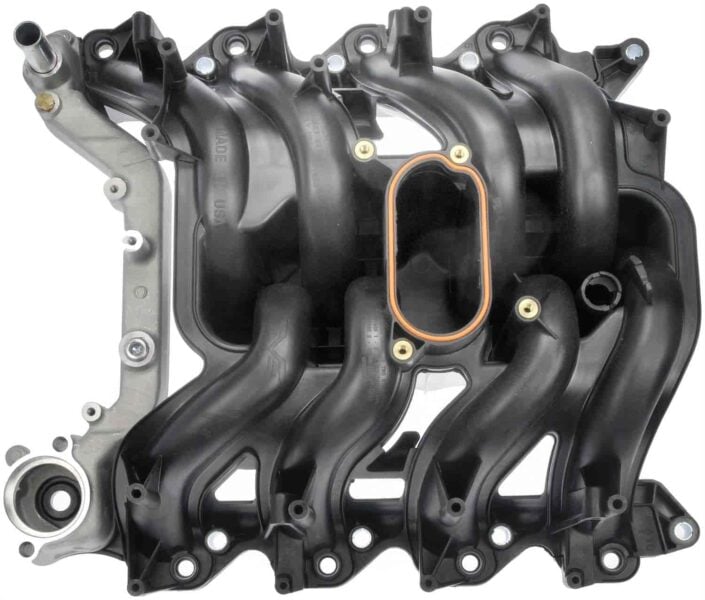Sign up now to join the JEGS email newsletter and be the first to learn about new products, special deals and e-mail only offers!

The Ford Mustang is undoubtedly one of the most popular cars to restore. Whether you're looking to bring an old classic back to its former glory or want to build a new project car from the ground up, restoring a Mustang can be an incredibly rewarding experience. However, undertaking such a project can also be daunting, especially if you've never done anything like it before. JEGS is here to help with a step-by-step guide to restoring this American icon.
First and foremost, you'll need to decide what kind of Mustang you want to restore. Are you looking for a classic early model like the first-generation Mustang that was introduced in 1964? Or perhaps you're more interested in a later model, such as the Fox body Mustang that was produced from 1979 to 1993? Each model comes with its own unique characteristics and challenges, so take some time to research and select the one that best fits your preferences and restoration goals.
Once you've decided on the specific Mustang you want to restore, it's time to start looking for the right candidate. If you're lucky, you may be able to find a complete car that just needs some love and attention. However, it's more likely that you'll need to source parts from various places, including JEGS. Look for a solid foundation that minimizes the amount of rust and structural damage, as this will make the restoration process smoother.
Let the fun begin! Now that you've found the right Mustang restoration project, it's time to take a closer look at the car and create a list of everything that needs to be done. This initial inspection will give you a good idea of the scope of the project as well as what parts you'll need to source.
Start by taking a look at the body. Are there any major rust issues? What kind of shape are the doors, fenders, and hood in? Is the glass cracked or missing? Make note of anything that will need to be replaced or repaired.
Next, create a "needs" list. This is made up of everything that needs to be done in order to restore the Mustang to its former glory. The list will help you keep track of your progress and ensure that you don't forget anything along the way.
Poor planning will make for a longer, more stressful restoration process. Save yourself some headaches by taking the time to plan and organize before you start tearing into your Mustang.
Differentiate between "needs" and "wants." Your needs list should include items that are absolutely necessary for the completion of the project, such as engine and body repairs. Wants, on the other hand, are non-essential upgrades or modifications that can be added later. Organize your needs list into categories such as "Body & Paint," "Interior," and "Mechanical" to focus on one area at a time and ensure you don't overlook anything.
Sign up now to join the JEGS email newsletter and be the first to learn about new products, special deals and e-mail only offers!

This step is easier said than done. Taking on a classic Mustang restoration does come with its fair share of challenges, the first of which is the initial disassembly. This can be a daunting task, especially if you're not sure where to start.
One of the best tips for successfully completing this step is to take plenty of pictures. As they say, a picture is worth a thousand words. Having photos of the car in its current state will help you immensely when it comes time to reassemble everything.
Another helpful hint is to create a diagram of how everything fits together. This can be as simple as a hand-drawn sketch or something more sophisticated like a computer-generated image. Either way, having a reference point will make the process of disassembly and reassembly much easier.
You need the right tool for the right job. This old saying definitely applies to classic Mustang restoration. To do the job right, you'll need to have the proper tools and equipment on hand.
Completing a restoration does require a fair amount of specialized equipment. For example, you'll need a welder for bodywork and an engine stand for a powerplant rebuild. While it's possible to get by without some of this equipment by outsourcing it, having everything you need before getting your hands dirty will make the job much easier (and less expensive).
Shelling out the cash for new parts is not necessary in some cases. Mustang restoration can be done on a budget by simply repairing and reusing some of the existing parts. This includes things like removing and repairing the old trim pieces.
Removing old trim is relatively straightforward. A set of panel removal tools from JEGS can make life much easier. Once the trim is off, it can be sanded down and finished to look new again. The same goes for various other body panels. A little elbow grease can go a long way in trying to save original parts.
In certain cases, your Mustang project car will need new parts. This can include anything from a new engine to a set of replacement floor mats.
There are many places to find Mustang parts, both online and offline. A good place to start your search is at JEGS as we offer a large selection of Mustang parts at great prices. Sourcing that hard-to-find part can be a challenge, but with a little patience and perseverance, you'll eventually find what you're looking for.
The cost of restoring a Ford Mustang can vary significantly depending on various factors. It's essential to set a budget and stick to it throughout the restoration process. Factors that can affect the cost include:
It's crucial to plan your budget carefully, considering all potential expenses, to ensure a successful and financially manageable restoration.
Restoring a Ford Mustang comes with its own set of advantages and challenges. Here's a look at the pros and cons:
Pros:
Cons:
Consider these pros and cons carefully before embarking on a Mustang restoration project to ensure it aligns with your goals and expectations.
Restoring a classic Ford Mustang is a labor of love, and as you progress through each step of the process, the anticipation of seeing your dream car come to life grows. Here are some essential tips for the restoration phase:
Restoring a Ford Mustang is a journey that demands dedication, patience, and attention to detail. The satisfaction of driving your fully restored Mustang is the ultimate reward for your hard work and passion. Remember, JEGS is here to support you every step of the way. Happy restoring!



